Ruinart
Ruinart Blanc de Blancs
Ruinart Blanc de Blancs
The jewel of Champagne, the iconic Ruinart Blanc de Blancs is a symbol of timeless elegance and refinement. Its transparent bottle reveals the luminosity of its wine, made from 100% Chardonnay, it is the epitome of the aromatic freshness that Ruinart aims at revealing through every cuvée.
Ruinart Blanc de Blancs includes some 25–30 different chardonnay crus, predominantly from the Côte des Blancs, the Montagne de Reims, the Sézannais and La Vallée de la Vesle. They reflect the rich diversity of the Champagne terroir.
HOW TO ENJOY
HOW TO ENJOY
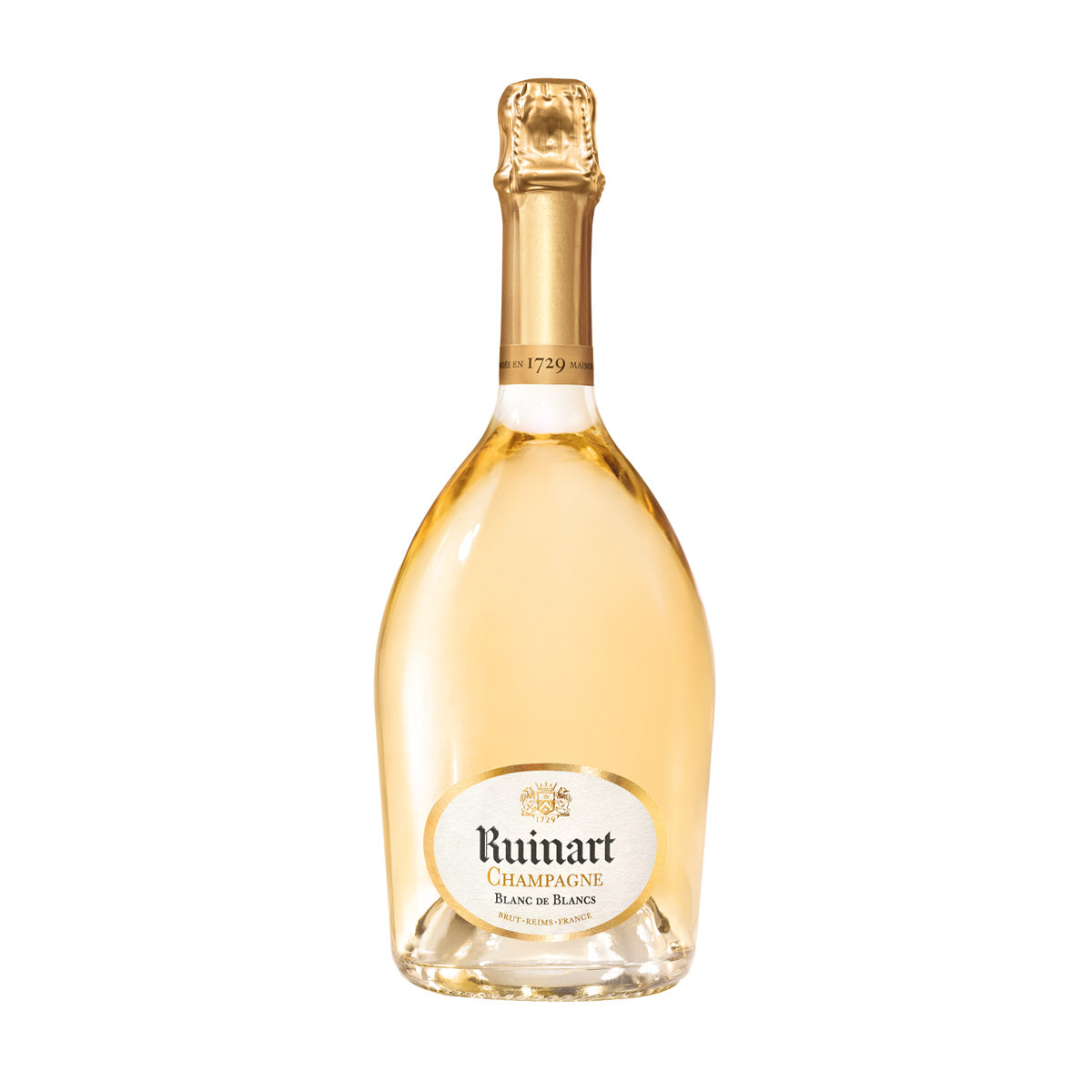
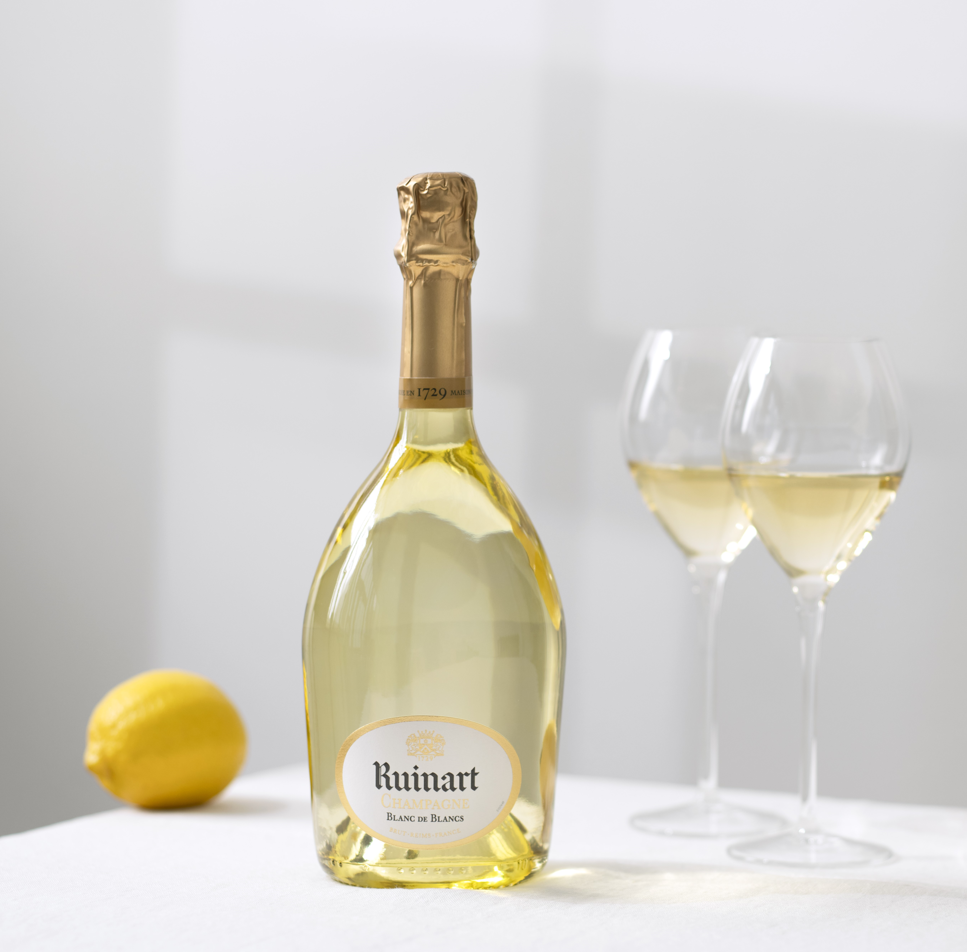
Appearance: Visually, the Ruinart Blanc de Blancs has a brilliant robe with a beautiful pale yellow color and slight hints of almond green and jade green reflections.
Nose: The first nose reveals intense aromas of fresh fruit: ripe lemon, juicy pear, or freshly picked peach. The secondary aromas are more floral with hints of white flowers, accompanied by a spicy touch combining ginger and pink peppercorns.
Palate: Balancing tension with roundness, the enveloping structure is highlighted by fresh aromas of ripe citrus and tropical fruit. With a long and delicate finale.
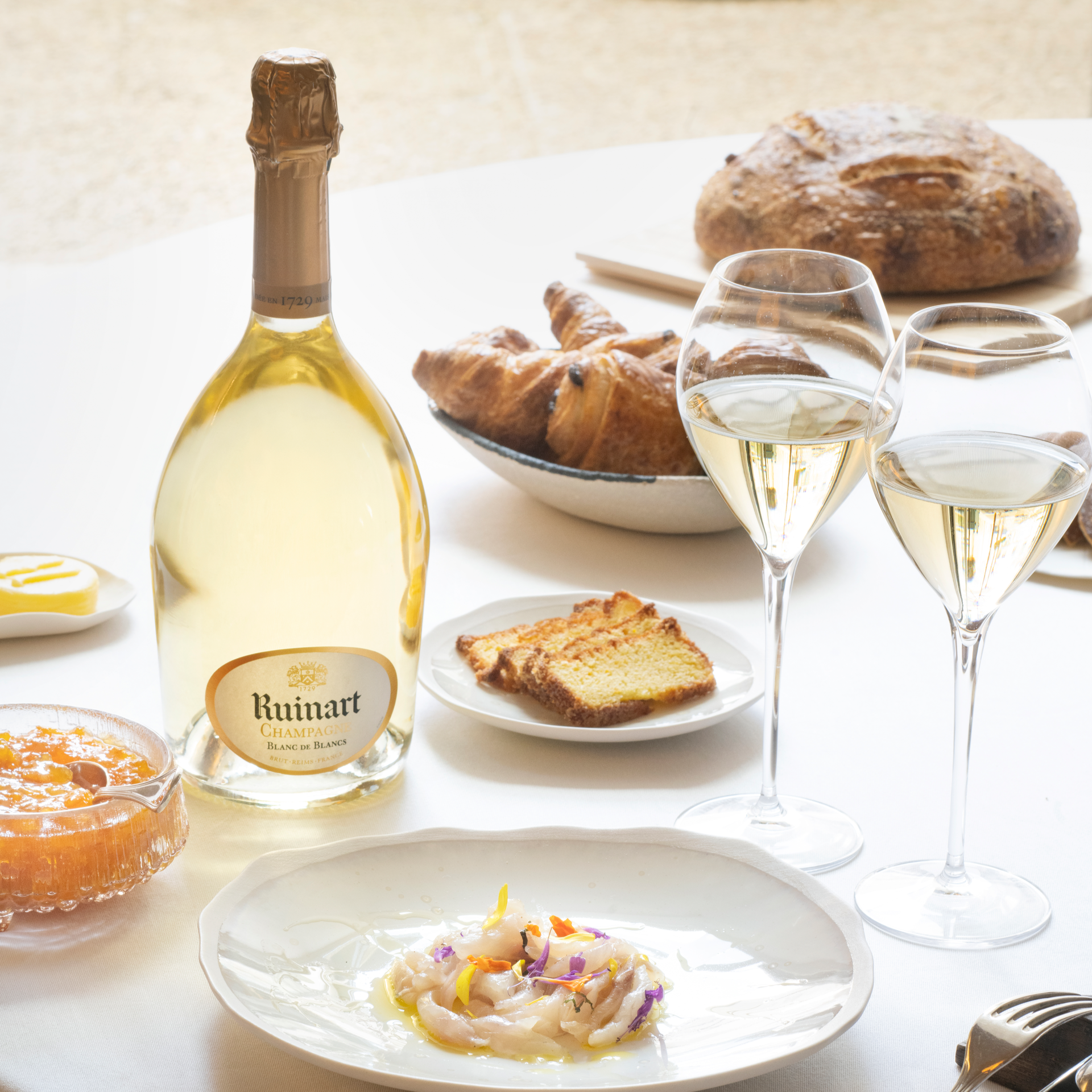
Cellar Master Frédéric Panaïotis, recommends pairing this champagne with seafood or fish.
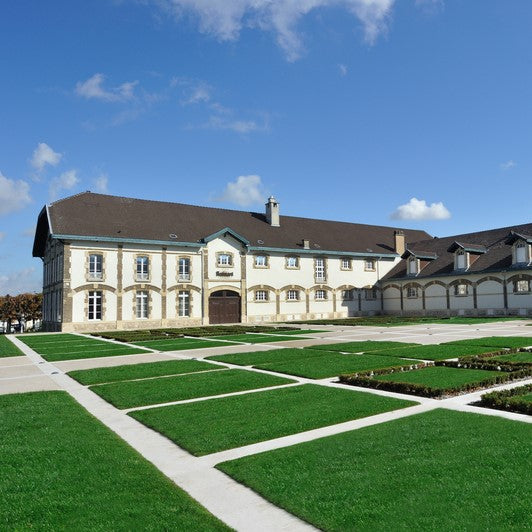
Reims, Champagne France. The House of Ruinart is unlike any other. It was the first established House of Champagne in 1729 and inspired by the intuition of a monk well ahead of his time.
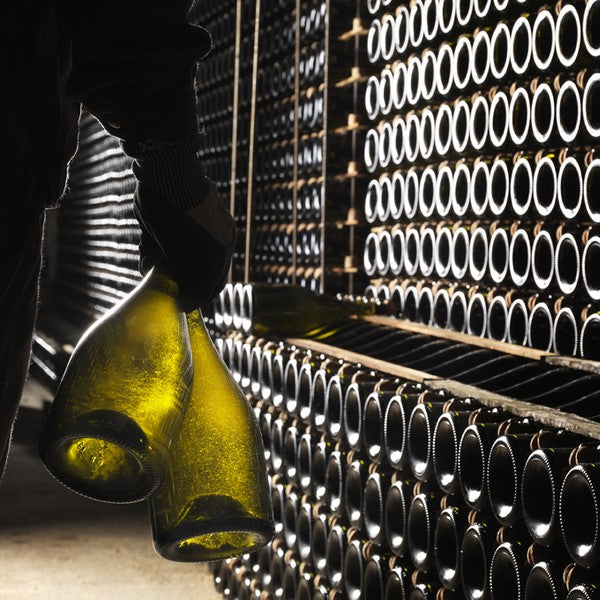
- Harvested by hand
- A blend of 25–30 crus including 20–30% reserve wine kept from a range of vintages
- Alcoholic fermentation in temperature-controlled stainless steel vats
- Malolactic fermentation
- Aged in cellars for 2–3 years
- Dosage: 7 g/L
- Contains sulphites
- Alcohol content – 12.5 % Vol
WORTH A TRY
EXCEPTIONALLY CRAFTED CHAMPAGNES
Cognac tradition. Craftmanship. Creativity. Centuries of expertise. Discover the full Hennessy Cognac range and enjoy a unique cognac tasting experience. Could Richard Hennessy and his eldest son James possibly have imagined at the end of the eighteenth century that, one day, their cognac would have travelled the world over, ignoring borders and challenging traditions?


